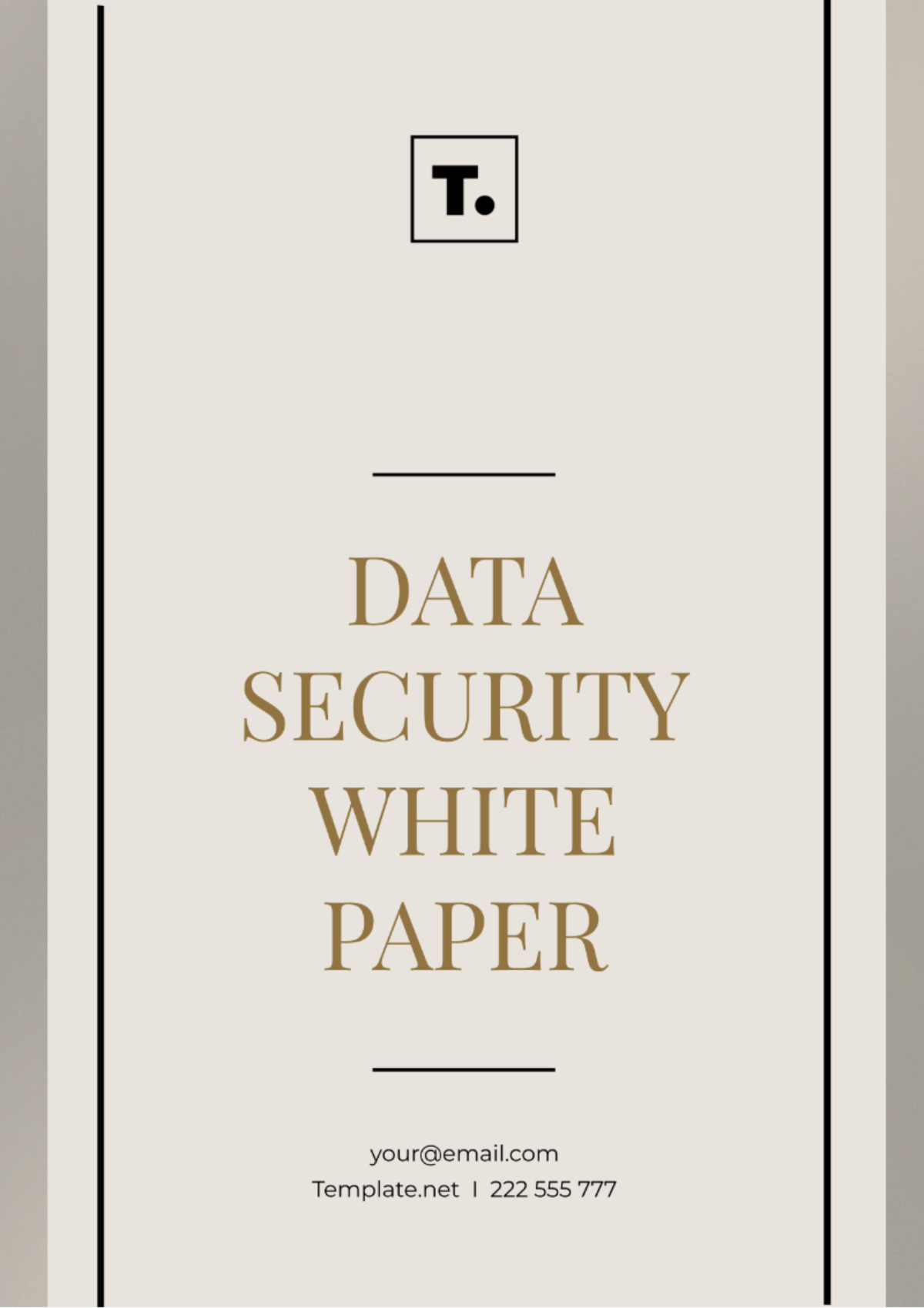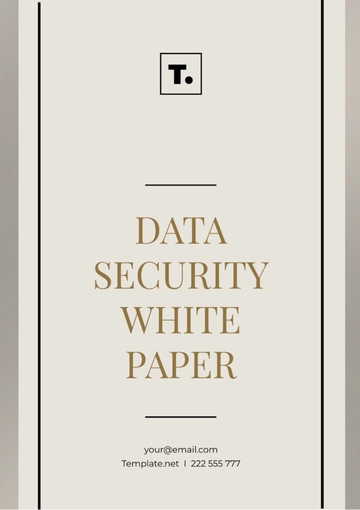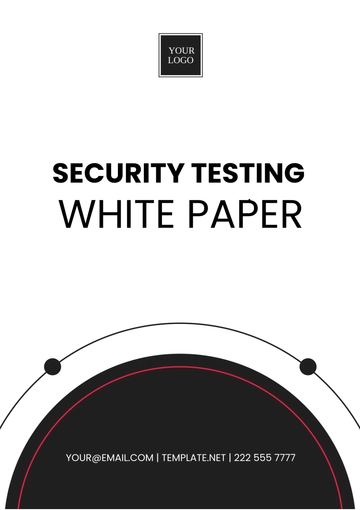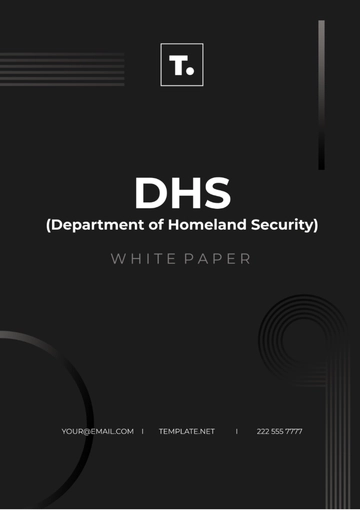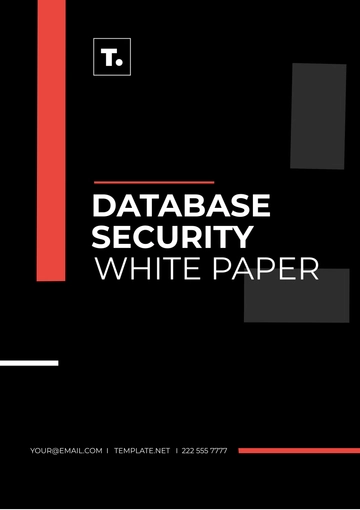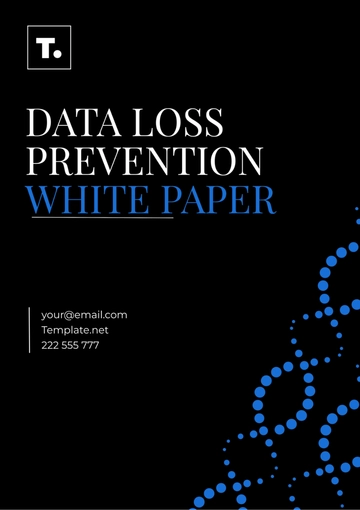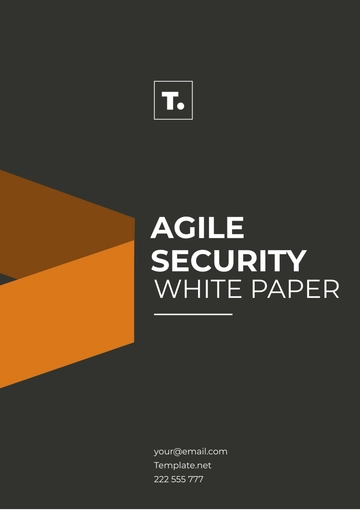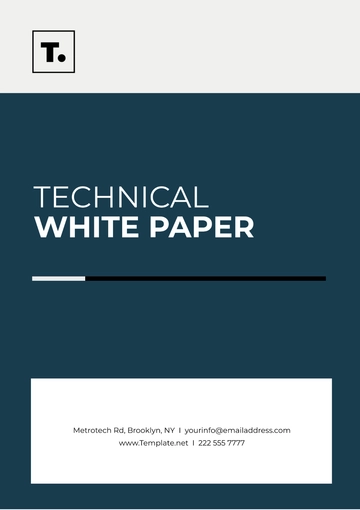Data Security White Paper
Data Security Policy Framework
Prepared by: [YOUR NAME]
Published by: [YOUR COMPANY NAME]
Date: [DATE]

This white paper serves as a template for [Your Company Name] to establish a robust data security policy aimed at protecting sensitive information and ensuring compliance with applicable laws and regulations.
I. Introduction
In the digital age, data breaches and information leaks have become common threats to companies of all sizes. An articulated data security policy is essential in safeguarding sensitive data and maintaining stakeholder trust. This document provides a structured approach to developing a comprehensive data security policy for [Your Company Name].
II. Objectives of the Data Security Policy
Define the scope and applicability of the policy to ensure all stakeholders understand their data protection responsibilities.
Establish rules for handling and securing various types of data at [Your Company Name].
Outline the procedures for reporting and responding to security breaches.
Ensure compliance with international, national, and state regulations on data privacy.
III. Scope
This policy applies to all employees, contractors, and third-party service providers of [Your Company Name] who have access to the organizational data and information systems.
IV. Data Classification
Data within [Your Company Name] will be classified into the following categories: Public, Internal, Confidential, and Restricted. Each category has different security controls and handling procedures.
V. Policy Framework
General Principles: Implementing a set of standards that apply universally across all types of data and usage within [Your Company Name].
Access Controls: Defining who can access information at various classification levels, and under what circumstances.
Incident Response: Detailing proactive steps and reactive measures for handling security incidents effectively.
Employee Training and Awareness: Regularly training employees concerning their data security responsibilities and best practices.
VI. Implementation
Implementation of this policy requires collaboration across departments within [Your Company Name]. It is essential to integrate security into the corporate culture and everyday business processes.
The following departments are key to the implementation strategy:
IT Department: To provide the necessary tools and technologies to support the policy.
Human Resources: To ensure all employees are educated about the policy and compliant with its terms.
Legal Department: To verify compliance with legal and regulatory requirements.
VII. Review and Revision
To remain effective, the Data Security Policy must be regularly reviewed and updated to adapt to new security threats and changes in compliance requirements. A formal review will be conducted annually by [Your Department].
VIII. Conclusion

Establishing a comprehensive data security policy is not just a regulatory necessity but a critical component of risk management and corporate responsibility at [Your Company Name]. By adhering to this policy, we can mitigate risks and enhance our company's resilience against potential data security threats.
White Paper Templates @ Template.net
